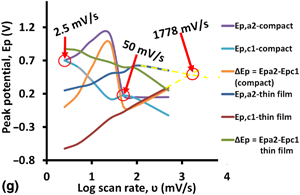Published online by Cambridge University Press: 12 August 2020

The development of new metalloplastic material from the combination of an alkaline-fused dehydrated glucose–copper (II) chloride, carbon soot, and polysulfone and the evaluation of its potential for the electrochemical detection of a pro-carcinogenic humic acid in water is reported. Excellent detection limit greater than 1 pico-part-per-million (order of 10–13 mg/L) was achieved, a value that proved to be first-of-its-kind till date. Transfer coefficients between 0.8 and 1.0 were realized. The new material showed some potential for splitting hydrogen peroxide to oxygen and thus may be explored for energy application in addition to its use as a water quality monitoring probe.